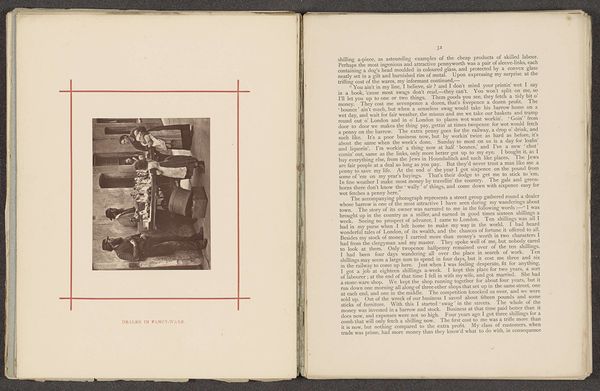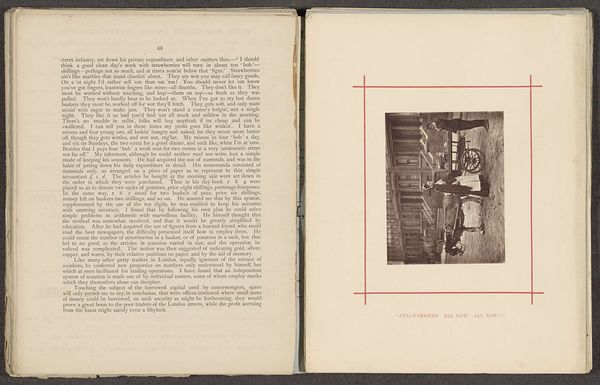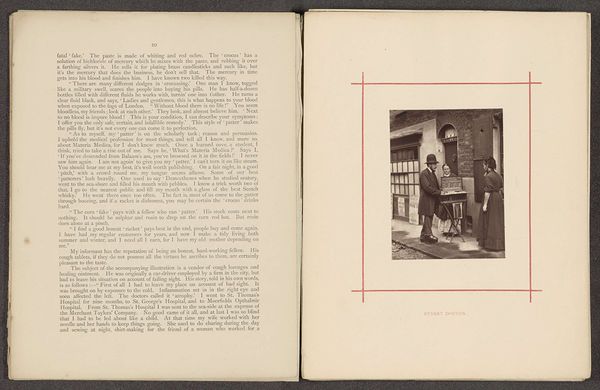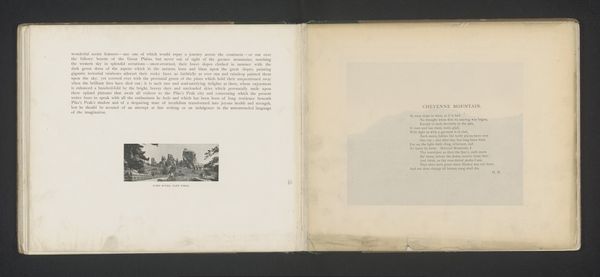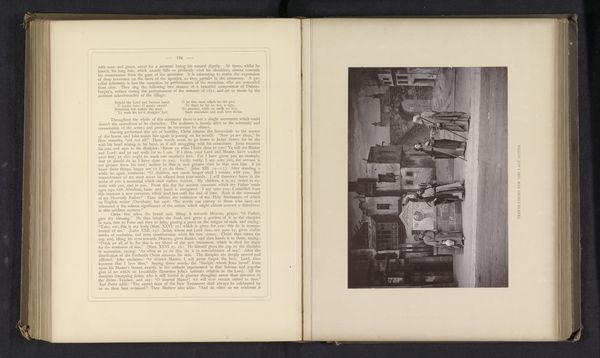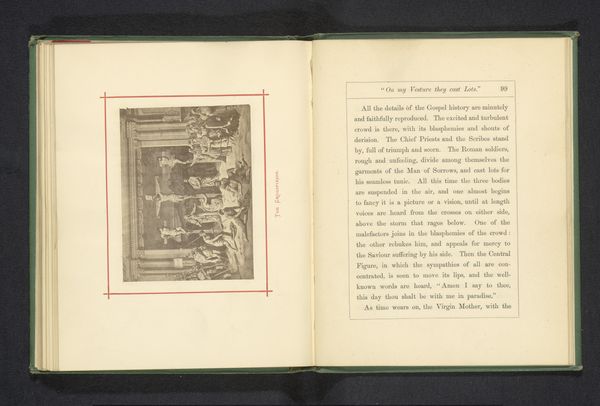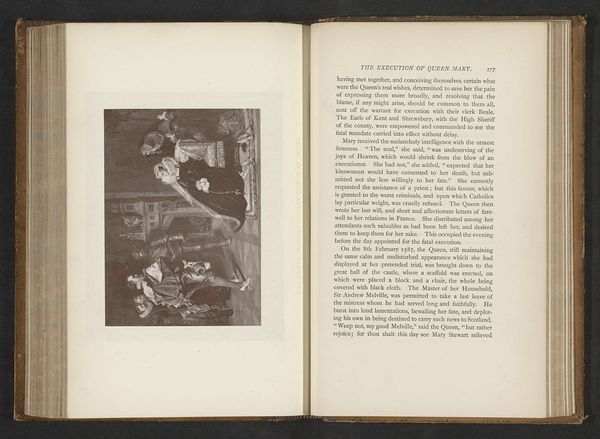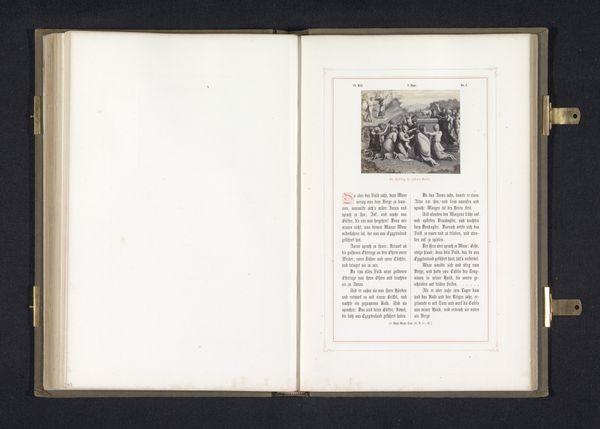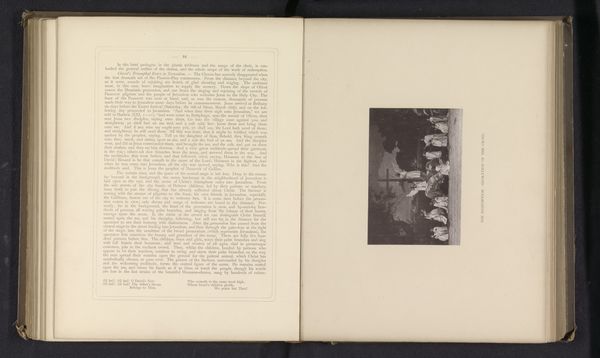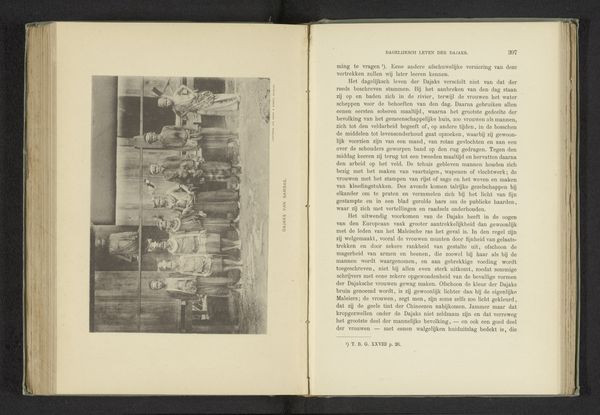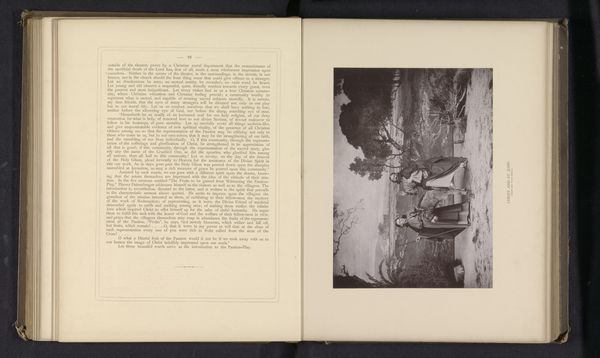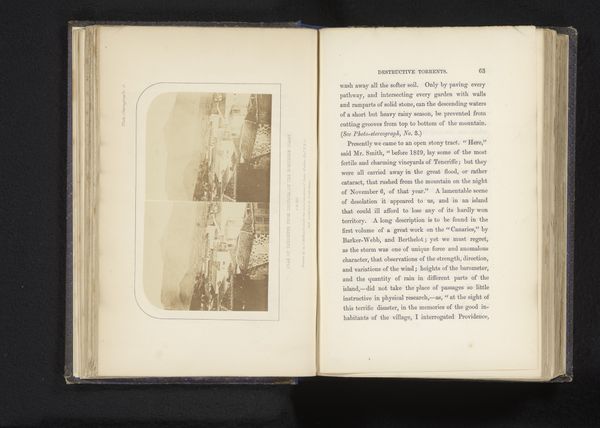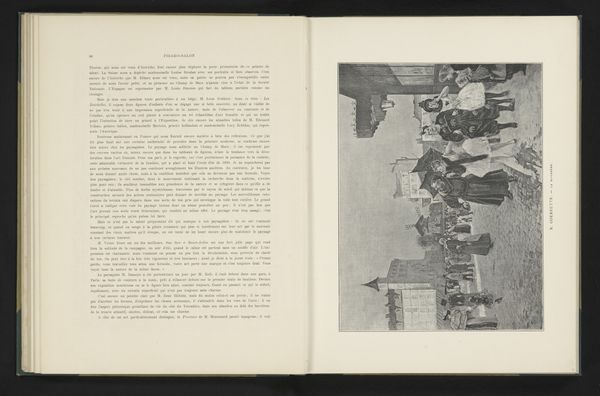
print, photography
# print
#
street-photography
#
photography
Dimensions: height 109 mm, width 81 mm
Copyright: Rijks Museum: Open Domain
Curator: Editor: So this is "“Mush-fakers” and ginger-beer makers," a print by John Thomson from before 1877. I'm immediately struck by its documentary feel, like a candid snapshot. It feels like it is capturing a specific social class. How would you interpret this work in relation to its historical context? Curator: That's a very perceptive initial reading! Given Thomson's project documenting street life in London, we need to consider the social and economic factors at play. Who were these "mush-fakers" and ginger-beer makers? And why was Thomson drawn to document them? He wasn't just documenting their work; he was also drawing attention to issues of class and labor. He challenges Victorian England’s perception of poverty. How might this image disrupt that period’s notion of what constitutes dignified work or social status? Editor: I hadn’t thought of it in terms of disrupting perceptions, more just as representing the social reality of that time, as being a "slice of life." Curator: Exactly! It is crucial to examine power structures, asking ourselves, "Who holds the authority to represent whom?" Think about who traditionally commissions or creates art, compared to the subjects Thomson chooses. Editor: So you're suggesting that Thomson's choice to document these individuals is in itself a political act, giving visibility to a marginalized population? Curator: Precisely! He forces viewers to confront realities that might otherwise be ignored or dismissed. By humanizing these workers, Thomson invites empathy. We must question the ways in which certain populations are made invisible and reflect on art’s potential as a vehicle for social change. Editor: This makes me think about how art can be a form of activism and social commentary. Thanks, I learned so much! Curator: Absolutely. The power of visual representation can challenge and reshape our understanding of social norms.
Comments
No comments
Be the first to comment and join the conversation on the ultimate creative platform.
